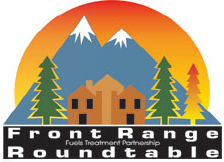PURPOSE
The Collaborative Forest Restoration Landscape Program was designated to accelerate ongoing restoration treatments that provide long-lasting ecological, social and economic benefits to ponderosa pine forests surrounding Colorado’s Front Range.
Project recommendations are based on the document “Living with Fire: Protecting Communities and Restoring Forests” authored by a collaborative group known as the Front Range Roundtable.


